Table of Contents[Hide][Show]
How to make homemade ricotta cheese in three different ways including the traditional recipe I use plus a video demonstration.
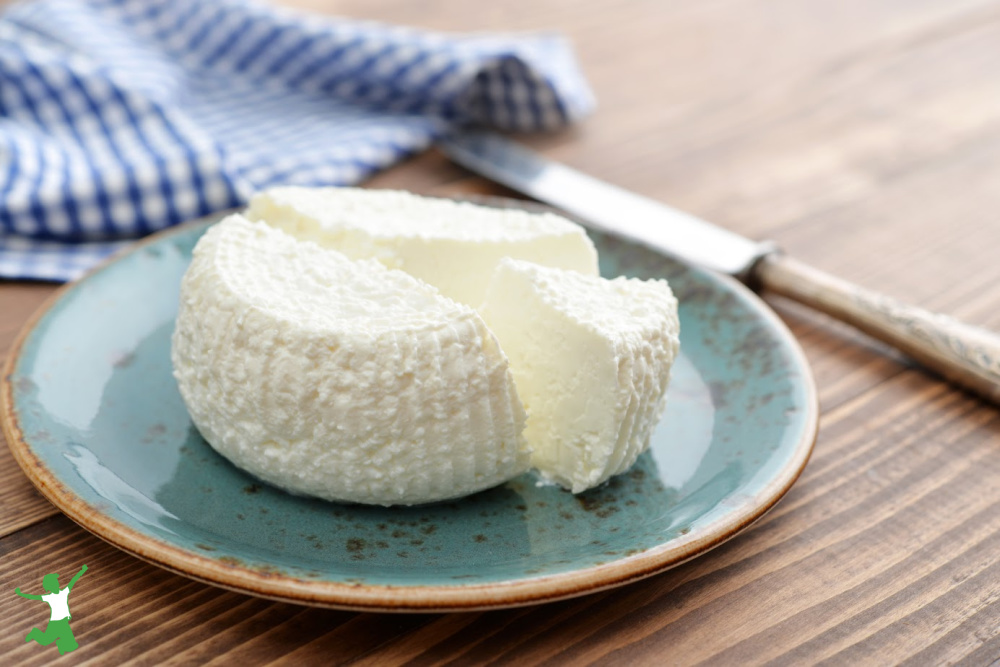
If you are interested in trying your hand at making cheese, ricotta is a great one to try first.
The deliciously sweet, creamy ricotta curds are slightly off-white in color with a taste and texture a bit reminiscent of whole milk cottage cheese or quark.
The great news is that messing up ricotta is just about impossible!
It is one of the easiest and perhaps the best cheese you will ever attempt. The results are so delectable you will no doubt be making it over and over again.
I first learned to make ricotta along with a number of other cheeses many years ago when an expert cheesemaker from Wisconsin (where else?) hosted a class in my home.
The session was extremely fun and informative, and the techniques I learned I continue to use to this day!
Three Ricotta Methods
Did you know that there are actually 3 different ways to make ricotta?
Similar to the different methods for making buttermilk, selecting an approach for making ricotta is totally up to you.
I cover all three approaches in the video lesson below.
In addition, the simplest method that I prefer using raw pastured milk is included as a written recipe.
Choose whichever method suits you best using whichever type of milk or whey you have on hand and locally available in your community.
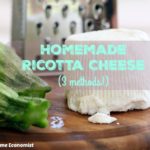
Homemade Ricotta Recipe
Recipe for the easiest of the three different methods for making homemade ricotta using raw milk.
Ingredients
- 1 gallon raw milk slightly soured
- 1 stockpot
- 1 stainless steel colander
- 1 cheesecloth fine mesh
- 1 large rubber band
Instructions
-
Pour slightly sour raw milk into a large stockpot. If the raw milk is very sour or slightly clabbered, do not use as the ricotta will not turn out sweet.
-
Put stockpot on large burner and turn on to medium-high heat. Keep a close eye on the pot. Within 5-10 minutes, the milk will start to separate as shown in the photo. Remove pot from heat immediately. Overcooking will destroy the delicate texture of the ricotta.
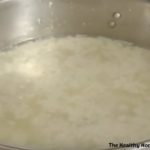
-
Line a stainless steel colander with a fine mesh cheesecloth folded in half. Place the lined colander into another large pot and carefully pour in the warm, separated raw milk.
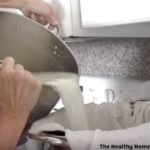
-
Let the whey drain from the ricotta cheese for 30 minutes to 1 hour. The longer you let the ricotta drain, the firmer it will be. Keep this in mind so that you achieve the desired consistency for whatever dish you plan to make with the ricotta.

-
Scrape out ricotta from the cheesecloth and use in a dish immediately such as lasagna or store in an airtight container in the refrigerator. It will last about a week refrigerated.
Recipe Video
Recipe Notes
Cow or goat milk may be used to make this homemade ricotta recipe.
More Homemade Cheese Recipes!
If learning to make cheese is exciting to you, check out my other cheesemaking posts!
- Homemade Clabber
- Gjetost Cheese recipe
- Fresh Cream Cheese
- Cheesemaking Common Problems and Solutions
- Probiotic, Whole Milk Cottage Cheese
- How to Make Yogurt Cheese
- Homemade Quark
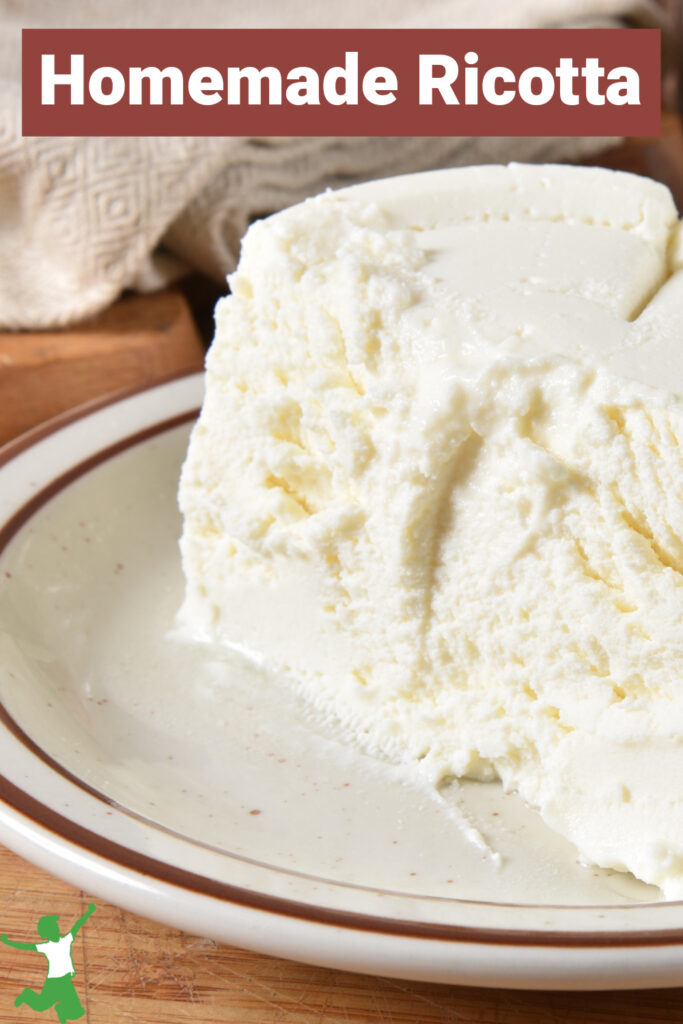








Where can i find raw milk. The closest thing I can find where I live is 3 % organic milk, will that do?
My method for making ricotta will not work with organic ultrapasteurized milk (which is best avoided anyway as it is so highly processed).
There are other methods described in the video for making ricotta with nonhomogenized, low temp pasteurized (cream top) milk that can be found most places in stores.
I am very confused. You said leftover whey can be made into geost cheese but that says not to use from making cheese, fresh only. Please let me know the correct way. Thank you for all the information
Fresh whey contains enzymes and probiotics and comes from fermented dairy (clabbered milk, kefir, yogurt) … whey leftover from cheesemaking has been cooked and no longer contains enzymes and probiotics.
Well first time. Had 3 half gallons of raw milk, from the cow. It tasted a bit sour, smelled like seafood to me. I have gotten my milk from this guy for several months now. Anyway, smelled all three 1/2 gallons and decided to try the ricotta cheese. Not sure what I did wrong, but didn’t work. Burned the milk in the bottom of the pot. 🙁 I poured through the mess cheese cloth and put the product back into the jars to save until I can figure out if there is anything else I can use this for. Help.
why do we “heat” the soured milk for ricotta cheese?
I have tried making 24 hour yogurt in the oven using a lamp plus the oven light and two times it came out curds and whey.
It doesn’t work if you don’t heat it 🙂
why do we “heat” soured milk for ricotta cheese?